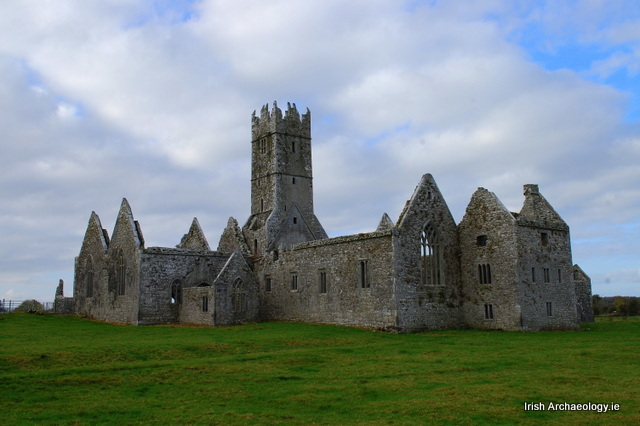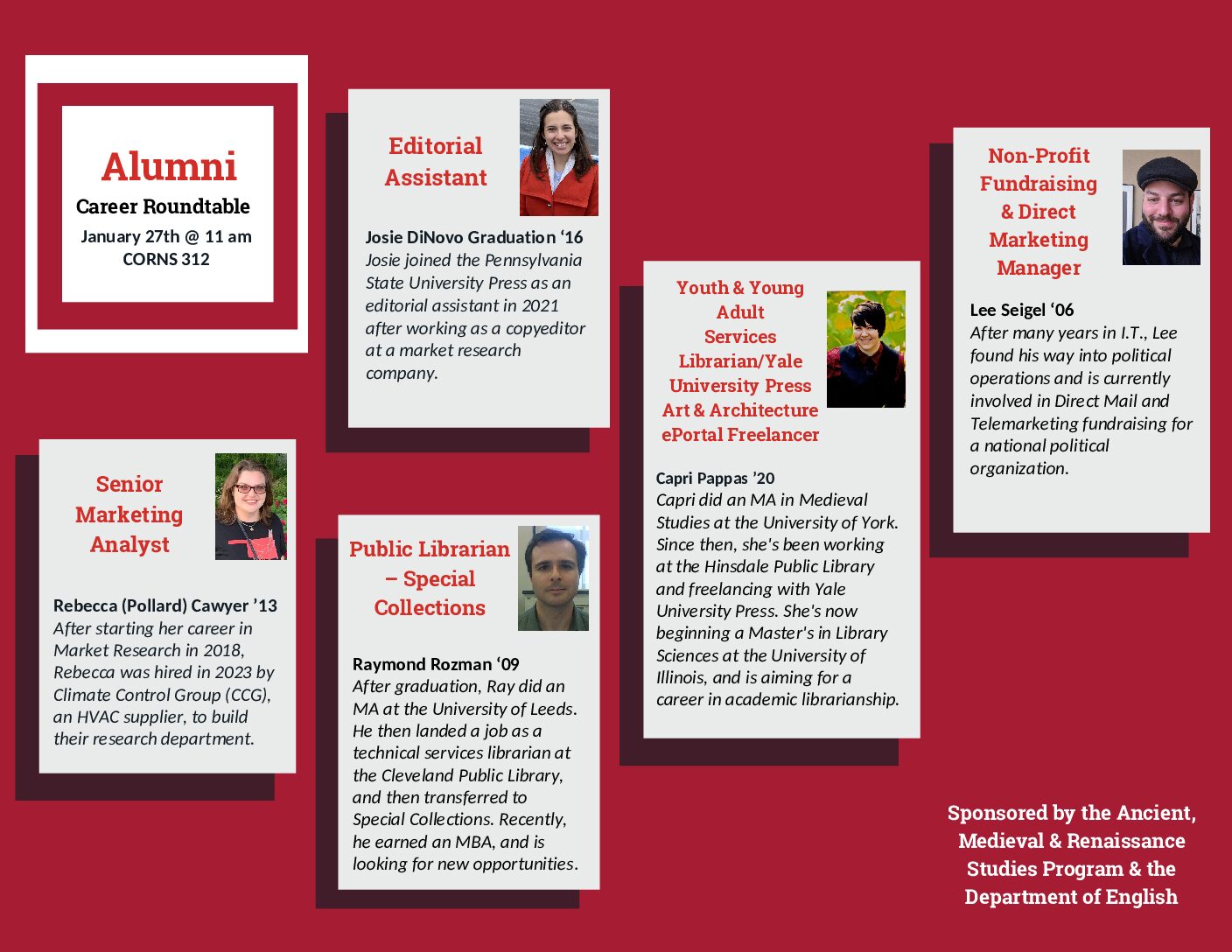The AMRS Department was pleased to welcome Denison University Professor of Sociology/Anthropology John Soderberg at the end of February. Though his work covers a range of disciplines, his presentation centered on religion in Early Medieval Ireland from an archaeological point of view. The big question his research focuses on—in Soderberg’s own words—is, “What does it mean to be a human taking part in religious activity?”
To help illustrate such a broad topic, Soderberg honed in on the relationship between the clerical and secular aspects of the medieval experience within the context of space and place, in particular Ireland. In Soderberg’s opinion, Ireland offers a uniquely uncomplicated case with which to study his queries, because of the country’s historical lack of distinction among its noble and common classes. From the monasteries to the land, Soderberg utilized what is left of the architecture and archaeological record of animal remains found in the vicinity.
Monasteries are a point of interest because of their nature as religious structures—which are seen by most scholarship as a single step in a long chain of religious settlements that stretches back to the Near East. Animal remains are of a very practical benefit, often being the biggest remains that are preserved at archaeological sites. By examining these remains, archaeologists are able to discern clues about the social relationships between those secular farmers, who must have provided the livestock to the monastery and the clerical monks. The monks, then, inhabited and performed the associated religious functions with the livestock given to the monastery. Considering the nature of the social relationships between seemingly juxtaposed spheres of life, we arrive at a deeper understanding of the role religion played in ordering Early Medieval society, and, by proxy, we can better appreciate the “big questions” at the heart of Soderberg’s research.
Most of the archaeological evidence in the case of the Early Medieval Irish monasteries points toward an extensive communal dynamic— between the clerical and secular—with monasteries and by extension their religious functions acting like a conduit through which a great degree of cooperation was fostered within the medieval world. Contrary to the typical view of monasteries that depict them as cloistered structures which are far removed from the secular world, Soderberg’s research suggests that entire communities may have sprung up around the monasteries. Among these were farmers and skilled craftsmen from whose expertise the monks received the benefits of life’s day-to-day necessities. It isn’t entirely clear how the craftsmen and farmers benefitted themselves, though Soderberg insists that these people weren’t stupid— they weren’t going to be tricked out of their source of livelihood unless there was some form of reciprocity between them and their benefactors.
From a sociological/ anthropological view, this suggests that modes of religious belief are an outgrowth of a primal human impulse, for cooperation within large, complicated groups. As such, Soderberg asserts that it is too anemic to portray the dynamic between mankind and its perceptions of God as one of hierarchical exploitation. On the contrary, the Medievals understood the spiritual and the mundane as inherently linked aspects of that organic whole for which they ever strived.





